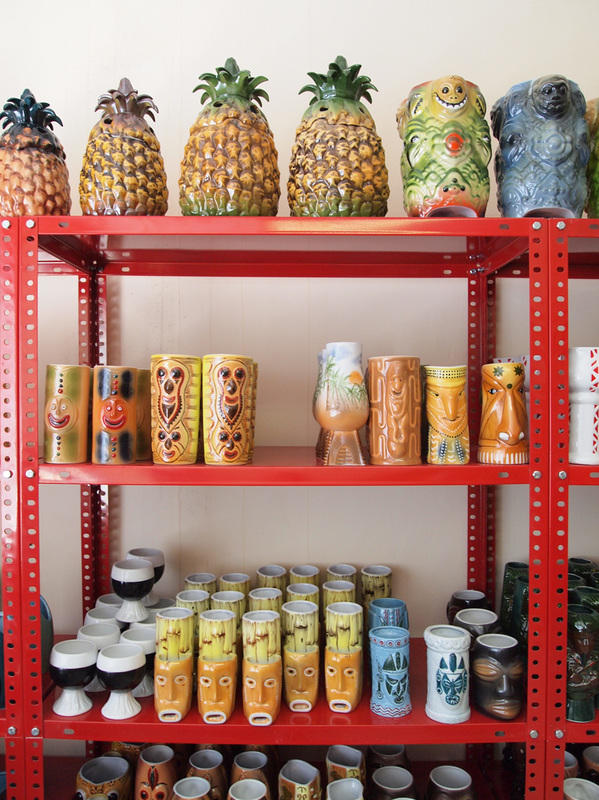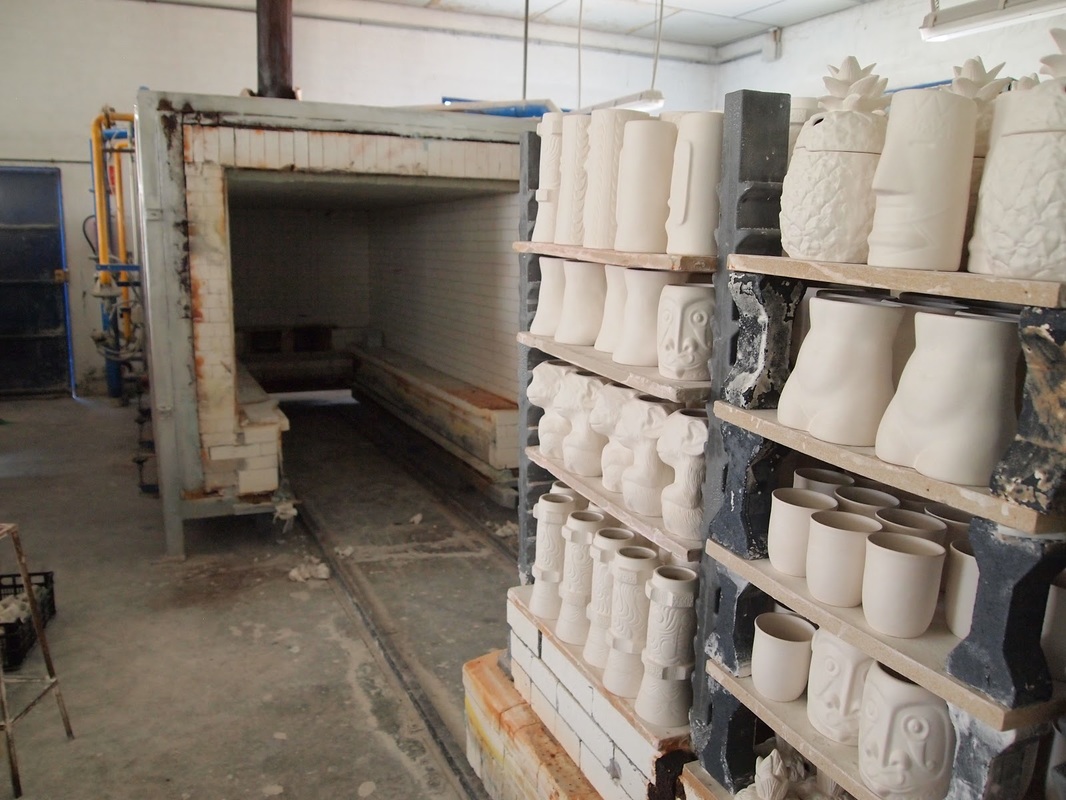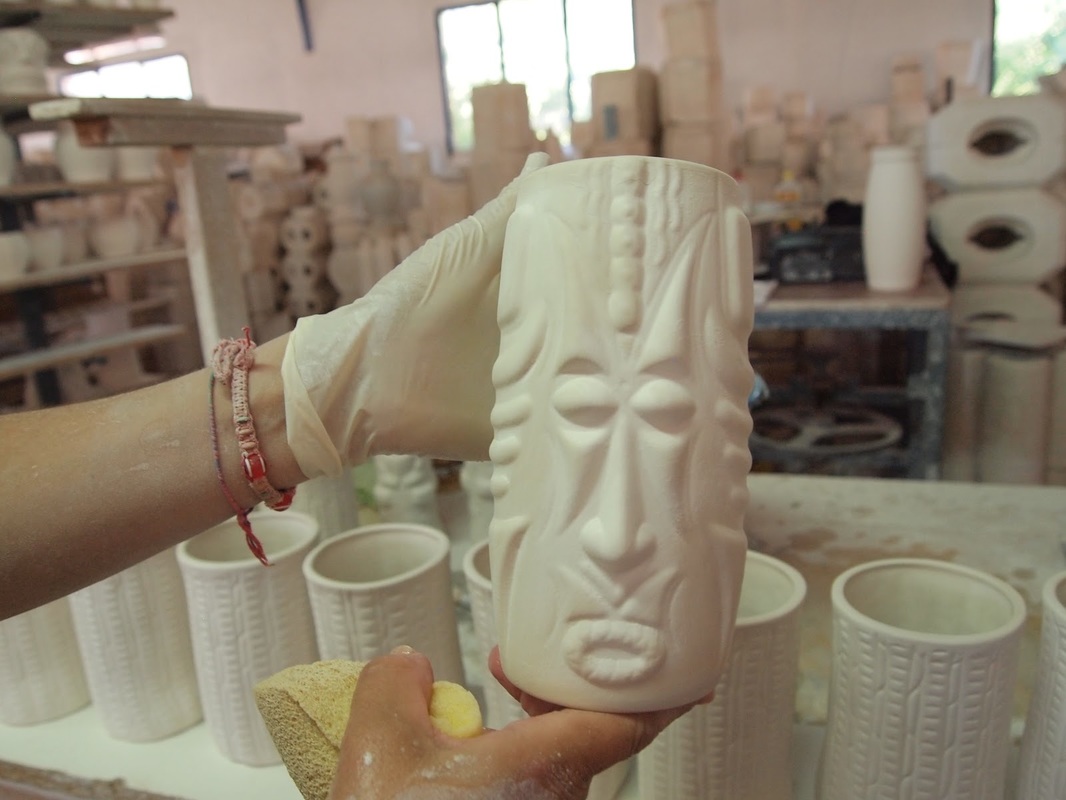It's a long, long way to Polynesia. The dusty hills of the province of Toledo, Spain are almost as far from the South Pacific, both geographically and culturally, as you can get. No frothy surf, thatched huts, or gently swaying coconut palms here. The town of Borox, high on the Castilian plain, runs more to tall thin evergreens and low, severe, sun-baked buildings with red tile roofs.
But one of those squat buildings on the outskirts of town might just be the center of the tiki universe.
But one of those squat buildings on the outskirts of town might just be the center of the tiki universe.
It all started in 1948 when Juan Agapito Pavón left Borox to work in the porcelain industry in the coastal province of Catalonia. But he didn't stop there, travelling the world as a professional musician in the 1950s and 1960s.
In his travels, Pavón discovered a surprising affinity for the tiki trend then emerging in the U.S. and Latin America. Tiki, an exaggerated take on Polynesian and Hawaiian artistic styles, had its day in the sun and faded for the next trend. But Pavón couldn't shake his enthusiasm for tiki's South Seas charisma.
So when he returned to Borox in the late '70s and founded Porcelanas Pavón, his own ceramics firm, Pavón indulged his tiki fixation in his downtime from making commercial kitchen and bathroom fixtures. By 1982, he was selling these exotic creations to customers.
The lounge-revival fad of the '90s, followed by a wider new appreciation for mid-century kitsch, brought Porcelanas Pavón a fresh wave of customers. Tiki enthusiasts all over the world came to recognize Pavón mugs as among the finest examples of the style, past or present. And bars around the world stock their cabinets with Pavón porcelain, from tiny Mediterranean tiki huts to the Hard Rock Cafe chain.
In his travels, Pavón discovered a surprising affinity for the tiki trend then emerging in the U.S. and Latin America. Tiki, an exaggerated take on Polynesian and Hawaiian artistic styles, had its day in the sun and faded for the next trend. But Pavón couldn't shake his enthusiasm for tiki's South Seas charisma.
So when he returned to Borox in the late '70s and founded Porcelanas Pavón, his own ceramics firm, Pavón indulged his tiki fixation in his downtime from making commercial kitchen and bathroom fixtures. By 1982, he was selling these exotic creations to customers.
The lounge-revival fad of the '90s, followed by a wider new appreciation for mid-century kitsch, brought Porcelanas Pavón a fresh wave of customers. Tiki enthusiasts all over the world came to recognize Pavón mugs as among the finest examples of the style, past or present. And bars around the world stock their cabinets with Pavón porcelain, from tiny Mediterranean tiki huts to the Hard Rock Cafe chain.
But the five Pavón brothers who run the company today are not just aping the past. Their designs have pushed the tiki style into even weirder new places. Alongside the traditional Easter Island heads and pineapples on the Porcelanas Pavón shelves are golden pharaohs, smiling Buddhas, and kaleidoscopic, psychedelic abstractions.
Anything "can be converted into something tiki," said Juan Jose Pavón in a recent interview with Monocle Radio. "There are thousands of designs and colors swirling around all the time. And often it's the customers making specific requests for new designs."
That's what makes tiki so much fun. While it may be loosely inspired by traditional South Pacific iconography, the modern style was an American creation, and today it belongs to the world. Anywhere people want to relax with a glass of something strong and fruity is tiki territory - even on this wind-blown, dead-end street in the Spanish countryside.
Anything "can be converted into something tiki," said Juan Jose Pavón in a recent interview with Monocle Radio. "There are thousands of designs and colors swirling around all the time. And often it's the customers making specific requests for new designs."
That's what makes tiki so much fun. While it may be loosely inspired by traditional South Pacific iconography, the modern style was an American creation, and today it belongs to the world. Anywhere people want to relax with a glass of something strong and fruity is tiki territory - even on this wind-blown, dead-end street in the Spanish countryside.
Photos by Alicia Rosello from this blog post at duduadudua.com, used by permission. Thanks Alicia!
Eucopia brings the best of European living to your door every month, in a box of beautiful, useful, interesting objects from the continent. Subscribe now for special pre-order prices starting at $12.
Eucopia brings the best of European living to your door every month, in a box of beautiful, useful, interesting objects from the continent. Subscribe now for special pre-order prices starting at $12.



 RSS Feed
RSS Feed